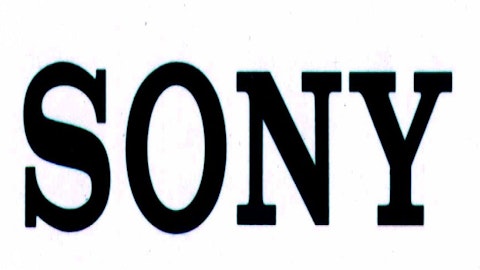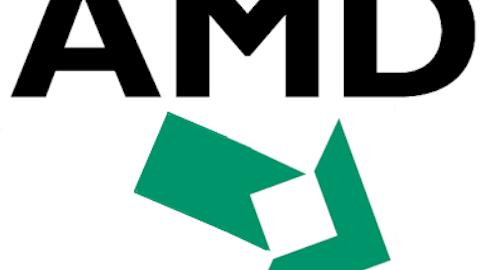The Xbox One, revealed by Microsoft Corporation (NASDAQ:MSFT) on May 21, demonstrated extremely impressive capabilities not only as a game platform, but as a multimedia PC. Xbox One’s brilliant combination of hardware and software positions it to become the center of the consumer’s living room and a certain hit this holiday season, when it becomes available. As a demonstration of Microsoft Corporation (NASDAQ:MSFT)’s growing hardware prowess, Xbox One will put the entire consumer electronics industry on notice.

The post-PC era PC
In “Can Game Consoles Save AMD?” I made the observation that the game console could continue to have a place in the lives of mobile device users who otherwise have dispensed with the traditional desktop PC. This expectation was completely confirmed by the debut of the One. The game play footage from games such as Call of Duty: Ghosts was easily the most detailed and realistic I’ve seen, including anything on top-of-the line PC gaming rigs.
Mobile devices can’t begin to approach what can be done on the new Xbox or current generation PCs. Here, the limiting factor is power consumption. Whereas a tablet might be limited to 5 watts or less in order to preserve battery life, the Xbox One operates on about 100 watts, and a typical PC consumes even more.
Xbox One, as a PC substitute, is very PC-like inside, having an Intel compatible processor courtesy of Advanced Micro Devices, Inc. (NYSE:AMD), a hard drive, and a Blu-ray drive. The Advanced Micro Devices, Inc. (NYSE:AMD) processor is in fact very similar to the Sony Corporation (ADR) (NYSE:SNE) Playstation 4 version, with an 8-core 64-bit processor and a Radeon graphics processor integrated on a single chip, the so-called Accelerated Processing Unit (APU).
In addition to the PC hardware, Microsoft Corporation (NASDAQ:MSFT) is endowing the One with a version of Windows 8. The Xbox One OS uses a tile interface very similar to the Windows 8 home screen, and can freely mix and match games, apps and video on the same screen. The inclusion of Windows was a master stroke for purposes of pulling in as much non-gaming functionality as possible into the One.
The main difference between Xbox Windows and Windows 8 is the substitution of voice and gesture commands for the touch-enabled UI. An updated Kinect sensor is included with the One and recognizes the user’s face and gestures. App starting and control are handled through voice commands, and these worked reliably in the demos.
The competitive edge
Up until now, I’ve wondered what, if any discriminators would exist between the Sony Corporation (ADR) (NYSE:SNE) PS4 and the Xbox One, given that they used similar hardware. Although we haven’t seen much of the PS4 so far, I believe that Windows in Xbox gives Microsoft Corporation (NASDAQ:MSFT) the competitive advantage. Windows enhances the One with so much functionality, without detracting from its appliance-like convenience. We’ll know more about PS4 when it’s finally unveiled at E3 on June 10.
Given that the game consoles have sold an average of 10 million units a year each for Sony and Microsoft Corporation (NASDAQ:MSFT), I think the market is at least that big, and first-year sales could easily be double the yearly average. Sony and Microsoft have sold about the same number (77 million) of their respective consoles, but I suspect that this time, the market split will not be symmetrical.
With all the hardware goodness of Xbox One, including the Kinect sensor, the retail price looks to be about $500 with an ASP for Microsoft of roughly half that. If Microsoft sells 5 million units in Q4, that would add about $1.25 billion in revenue to the Entertainment and Devices division, home of Xbox and Windows Phone, which would be a 33% increase over the EDD revenue of $3.772 billion in Q4 2012.
The stakes are similarly high for Sony. In its last fiscal year, Sony’s game division had revenue of $7.52 billion, down 12% from the previous year. If Sony only manages to sell 10 million PS4s in the coming year, that adds about $2 billion in revenue, or 27% of the last fiscal year.
Xbox One market impacts
In addition to having a direct impact on game console competitors Xbox One will also have an impact on the market for high end “enthusiast” PCs for gaming. Even though PCs will continue to offer higher levels of performance than the new generation of consoles, consoles will cost thousands less. Intel, in a 2012 Intel Developer Forum presentation, estimated that there were 30 million enthusiast PC users, and I expect the next-gen consoles to reduce the size of the enthusiast market as gamers elect to buy consoles rather than new PCs.
Intel also estimated in the same presentation that the number of mainstream PC users was about 220 million, and I expect Xbox One to also attract users in this segment. Intel, in the process of rolling out its fourth-gen Core “Haswell” processors, may not even notice the effect of Xbox, but I believe that NVIDIA Corporation (NASDAQ:NVDA) will. The problem is that both Intel Haswell processors and the AMD processors in Xbox One and Playstation 4 include very capable on-board graphics that eliminate the need for a separate graphics processor. This trend of creating ever more capable Intel architecture SOCs will continue to make the discrete graphics processor increasingly irrelevant.
The GPU segment of Nvidia has been pretty much carrying the ball in terms of growth, with the latest quarter’s revenue up 8.1% y/y to $785.6 million in Q1. Meanwhile the ARM processor segment lost momentum as revenue declined 22% y/y to $103.1 million. With its efforts to expand into the ARM market stalled, Nvidia’s dependence on its line of GPUs makes it vulnerable to the overall technology trend: eventually, discrete graphics processors will only be used for specialized scientific and engineering applications that make use of the tremendous parallel processing power of the GPU.
Living to fight another day
AMD is a clear winner in the next-gen consoles, since they sell the same number of APUs no matter how Sony and Microsoft divide the market. Sales of 20 million consoles in the coming year would add about $800 million in revenue to AMD’s Computing Solutions Division. The console wins will also help boost sales of AMD’s APU’s for PCs through a halo effect. Since a console-equivalent APU in a PC would have about the same level of performance and be very economically priced, AMD may be able to win back some of the market share (currently about 12%) that I have previously estimated it lost to Intel in Q1. At 20 million consoles, AMD would just be breaking even, but it would have escaped what many assumed was certain death.
The article Microsoft’s Most Important Hardware originally appeared on Fool.com and is written by Mark Hibben.
Mark is a member of The Motley Fool Blog Network — entries represent the personal opinion of the blogger and are not formally edited.
Copyright © 1995 – 2013 The Motley Fool, LLC. All rights reserved. The Motley Fool has a disclosure policy.



